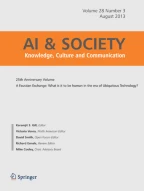Abstract
Incidence and prevalence rates of dengue have increased over the years, and the disease is quickly becoming cause for concern within the public health community. Globally, 128 countries and slightly under four billion people are at risk of contracting dengue. In Sri Lanka, more than half of dengue cases originate in Colombo, which in previous years, used a manual pen-and-paper data management system, which meant that it was not possible to obtain or provide up-to-date information about the severity and spread of dengue. In 2015, two versions of a mobile application called Mo-Buzz Dengue were developed and launched in Colombo, Sri Lanka in order to overcome the challenges of the traditional management system by capitalizing on the rising affordability and ubiquity of mobile phone technology. To keep up with the dynamic nature of disease outbreaks, real-time data need to be visualized in a manner which facilitates discerning and comprehending these patterns. Hence, we used health maps in Mo-Buzz to effectively present this information. The first version of Mo-Buzz was for public health inspectors (PHIs), digitized data management as well as provided educational materials. The second version of Mo-Buzz was a source of information for the general public, a crowdsourcing platform to provide information relating to dengue transmission, and for health authorities to alert users to dengue-specific developments in their area. This paper illustrates the design considerations of the Mo-Buzz disease surveillance system for the general public. A draft scaled-down version of the PHI system was used to obtain feedback and make incremental design enhancements. Additionally, similar health maps were evaluated in terms of capability and usability. These findings were applied to identify future enhancements to the health map of Mo-Buzz Dengue.
Similar content being viewed by others
Explore related subjects
Discover the latest articles, news and stories from top researchers in related subjects.References
Choropleth Maps (n.d.) Indiemapper: https://goo.gl/RfmuLC. Accessed 14 Jun 2015
Dot density maps (n.d.). Indiemapper: https://goo.gl/iJYttV. Accessed 14 Jun 2015
Eier (2012) The pros and cons of choropleth maps. viscomvibz: https://goo.gl/WUgoq8. Accessed 14 Jun 2015
HealthMap: outbreaks near me (2015) (HealthMap). https://goo.gl/gMXZXS. Accessed 13 Jun 2015
Lwin MO, Vijaykumar S, Fernando ONN, Cheong SA, Rathnayake VS, Lim G, Theng YL, Chaudhuri S, Foo S (2014) A 21st century approach to tackling dengue: crowdsourced surveillance, predictive mapping and tailored communication. Acta Tropica 130:100–107
Lwin MO, Vijaykumar S, Lim G, Fernando ON, Rathnayake VS, Foo S (2015a) Baseline evaluation of a participatory mobile health intervention for dengue prevention in Sri Lanka. Health Educ Behav 43(4):471–479. https://doi.org/10.1177/1090198115604623
Lwin MO, Vijaykumar S, Lim G, Rathnayake V, Fernando ON, Foo S (2015b) Consumer acceptance of a mobile-based civic engagement-centric system for dengue prevention: results from a pilot test in Sri Lanka. 2014 ANZMAC 2014 Proceedings, pp 353–359
Lwin MO, Vijaykumar S, Foo S, Fernando ONN, Lim G, Panchapakesan C, Wimalaratne P (2016) Social media-based civic engagement solutions for dengue prevention in Sri Lanka: results of receptivity assessment. Health Educ Res 31(1):1–11
Ministry of Health (2016) Disease surveillance—trends. https://www.epid.gov.lk/web/index.php?option=com_casesanddeaths&Itemid=448&lang=en. Accessed 27 Nov 2016
Meirelles I (2013) Design for information. Rockport Publishers, USA
NCBI (1999) Computer-generated dot maps as an epidemiologic tool. [Image]. https://goo.gl/mHmofE. Accessed 16 Jun 2015
New HIV diagnosis—Philadelphia (2010) [Image]. https://goo.gl/GFRTCg. Accessed 16 Jun 2015
Rogers RW (1975) A protection motivation theory of fear appeals and attitude change. J Psychol 91(1):93–114. https://doi.org/10.1080/00223980.1975.9915803
Roth RE (2010) Dot density maps. University of Wisconsin-Madison: https://goo.gl/lQ125N. Accessed 13 Jun 2015
SG Dengue Hotspot (2014) (AppOrigins). https://goo.gl/N0TTVZ. Accessed 13 Jun 2015
Thematic Map (n.d.) Wikipedia.https://goo.gl/gou5vp. Accessed14 Jun 2015
University of Münster (2015) Map types. https://goo.gl/kDkcqN. Accessed 13 Jun 2015
Vaccine-preventable outbreaks (2015) From Council on Foreign Relations: https://goo.gl/yEuM0f. Accessed 14 Jun 2015
Acknowledgements
This research is supported by the National Research Foundation, Prime Minister’s Office, Singapore under its International Research Centres in Singapore Funding Initiative and administered by the Interactive Digital Media Programme Office. We also duly acknowledge the support and cooperation of the Colombo Municipal Council management, the Public Health Inspectors, Mobitel, and The University of Colombo. We wish to acknowledge the funding support for this project from Nanyang Technological University under the Undergraduate Research Experience on Campus (URECA) programme.
Author information
Authors and Affiliations
Corresponding author
Ethics declarations
Conflict of interest
The authors declare that they do not have any conflict of interest.
Additional information
Publisher's Note
Springer Nature remains neutral with regard to jurisdictional claims in published maps and institutional affiliations.
Rights and permissions
About this article
Cite this article
Lwin, M.O., Ng, J.S., Jayasundar, K. et al. Visual design for a mobile pandemic map system for public health. AI & Soc 36, 1349–1360 (2021). https://doi.org/10.1007/s00146-020-00939-7
Received:
Accepted:
Published:
Issue Date:
DOI: https://doi.org/10.1007/s00146-020-00939-7
